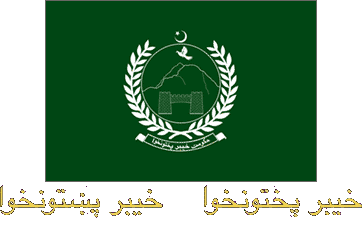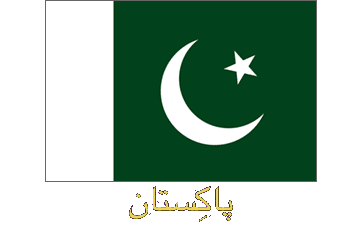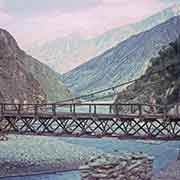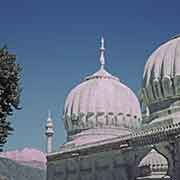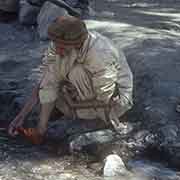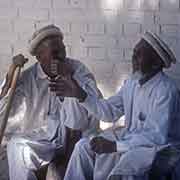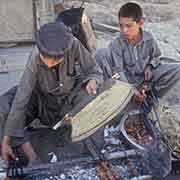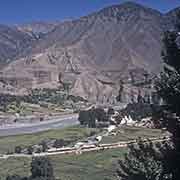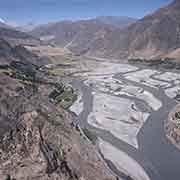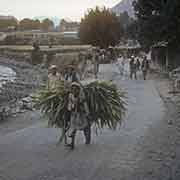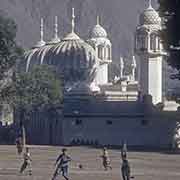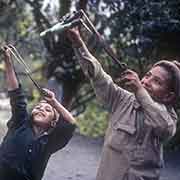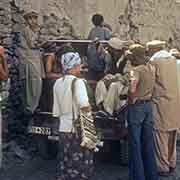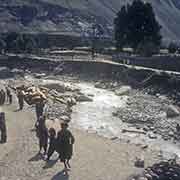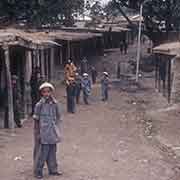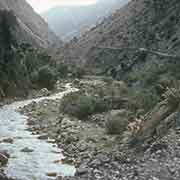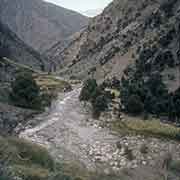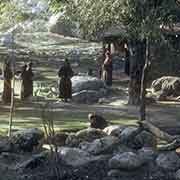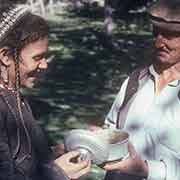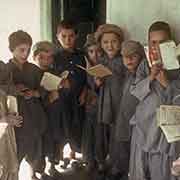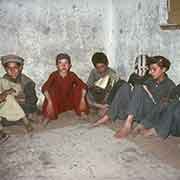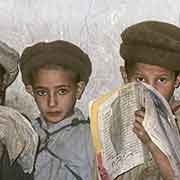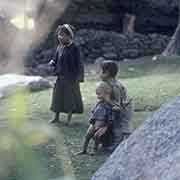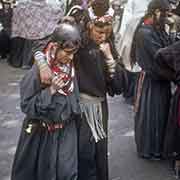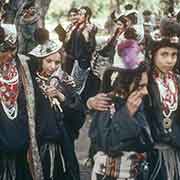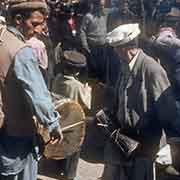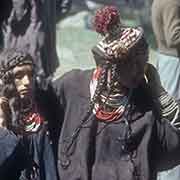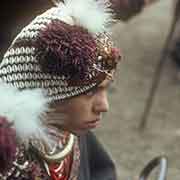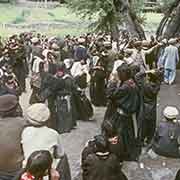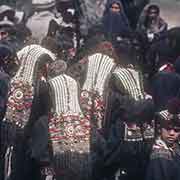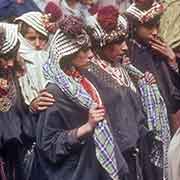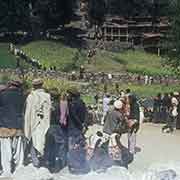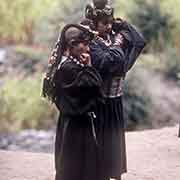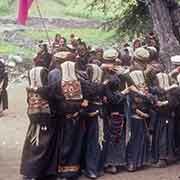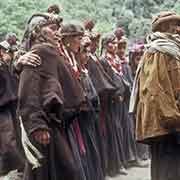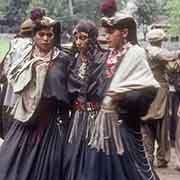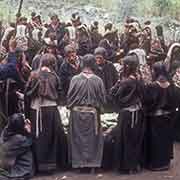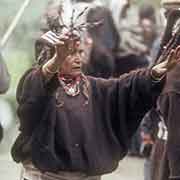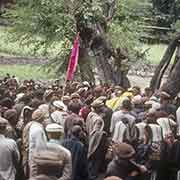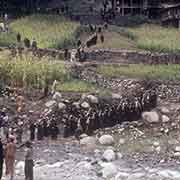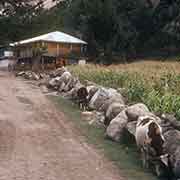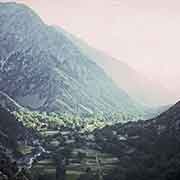Photos of the Chitral and the Kalash Valley, Pakistan
The Chitral and the Kalash Valley
Chitral, a town on the Chitral River in the north of Khyber Pakhtunkhwa, is the capital of the district with the same name. It lies at the foot of Tirich Mir, the highest peak of the Hindu Kush (7,708 metres). Present-day Chitral District was a fully independent monarchy under a hereditary king, the “Mehtar”, of the Katur dynasty. In 1885 the British negotiated an alliance with the Mehtar, in which Chitral became a princely state, sovereign but subject to the suzerainty of British India. This agreement remained until 1947.
you may then send it as a postcard if you wish.
At the time of the Partition of India in 1947, the Mehtar of Chitral, Muzaffar ul-Mulk, accepted accession to Pakistan, and in 1954 the State of Chitral became a federated state of Pakistan. In 1969 however, all frontier states were abolished: the Government of Pakistan took over the administration, and effectively the State of Chitral was extinguished. In 1972 all titles, styles and privileges of the rulers of the former princely states of Pakistan, including Chitral, were abolished.
Just south of the Chitral Valley are three narrow valleys, surrounded by the Hindu Kush mountain range. The inhabitants of the valley are the Kalash people, who have a unique culture, and speak their own Dardic Indo-Aryan language. Most are not Muslim and practice a unique religion, classified either as a form of animism or ancient Hinduism. Women wear long black robes and often cowrie-shell headdresses, but the men are indistinguishable from other Pakistani. There are different festivals and ceremonies. They celebrate a funeral ceremony, “Krakal”, as seen in the village of Bumburet (Mumuret in the Kalash language), where men and women dance, accompanied by drums and singing.
